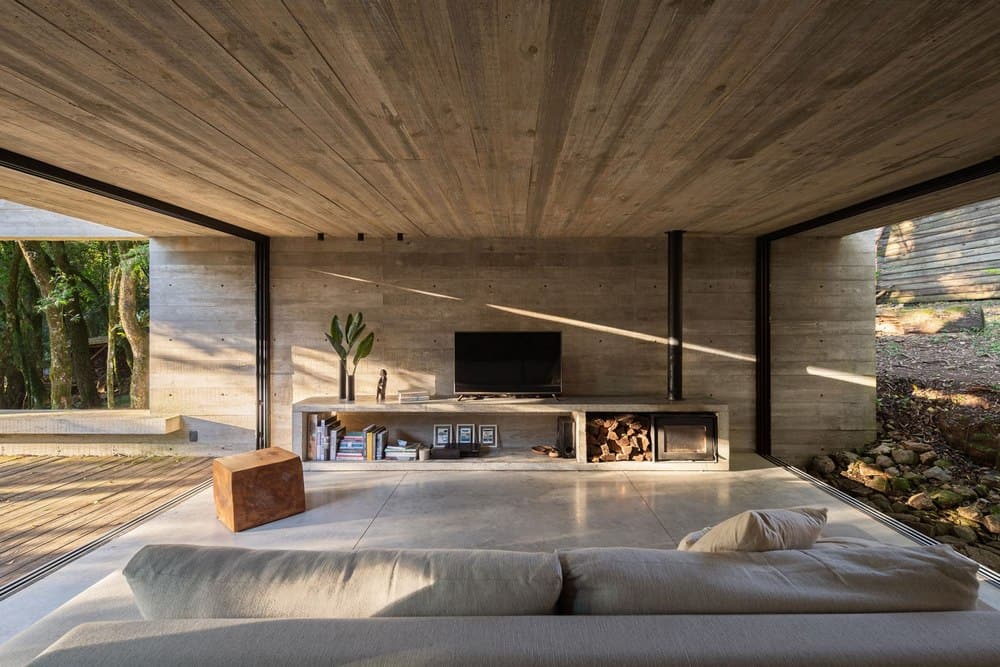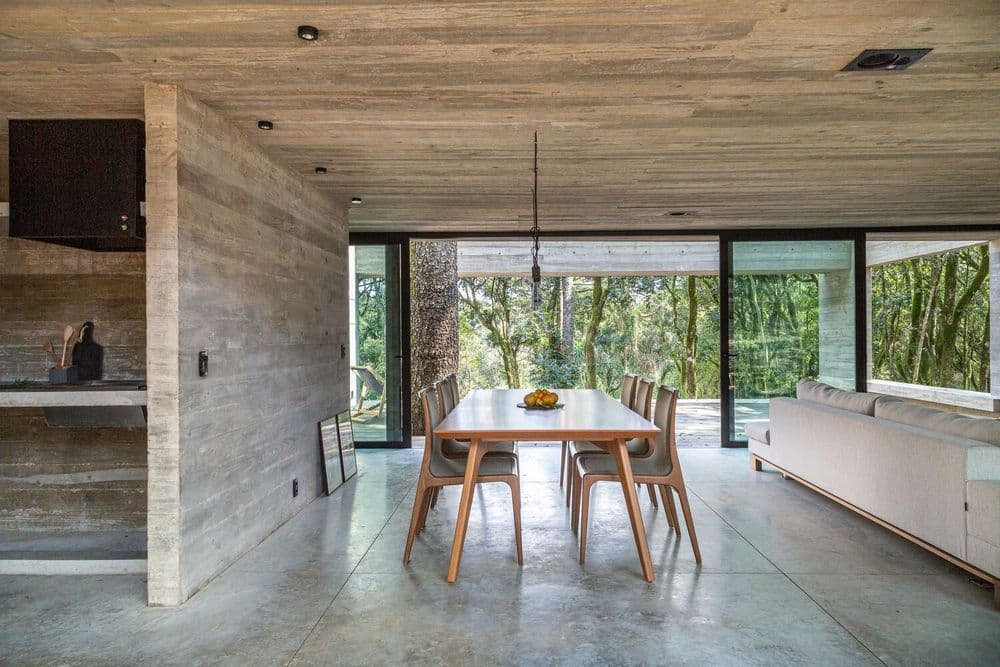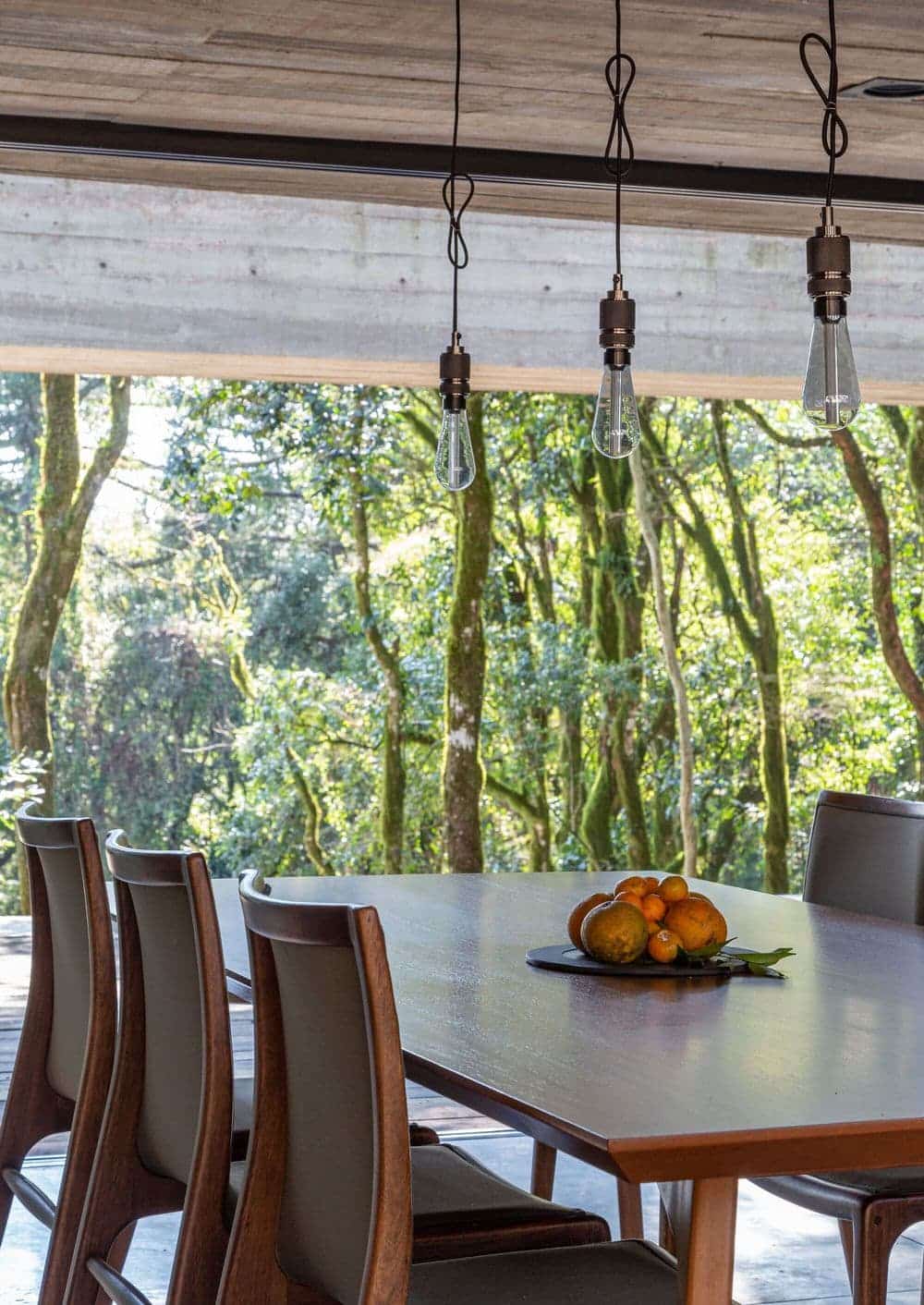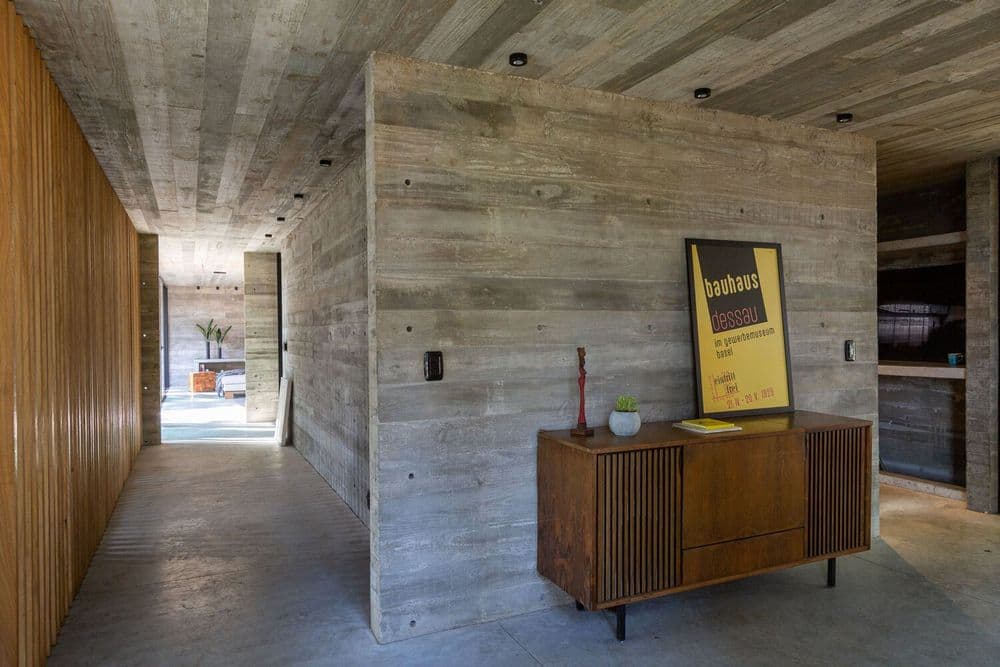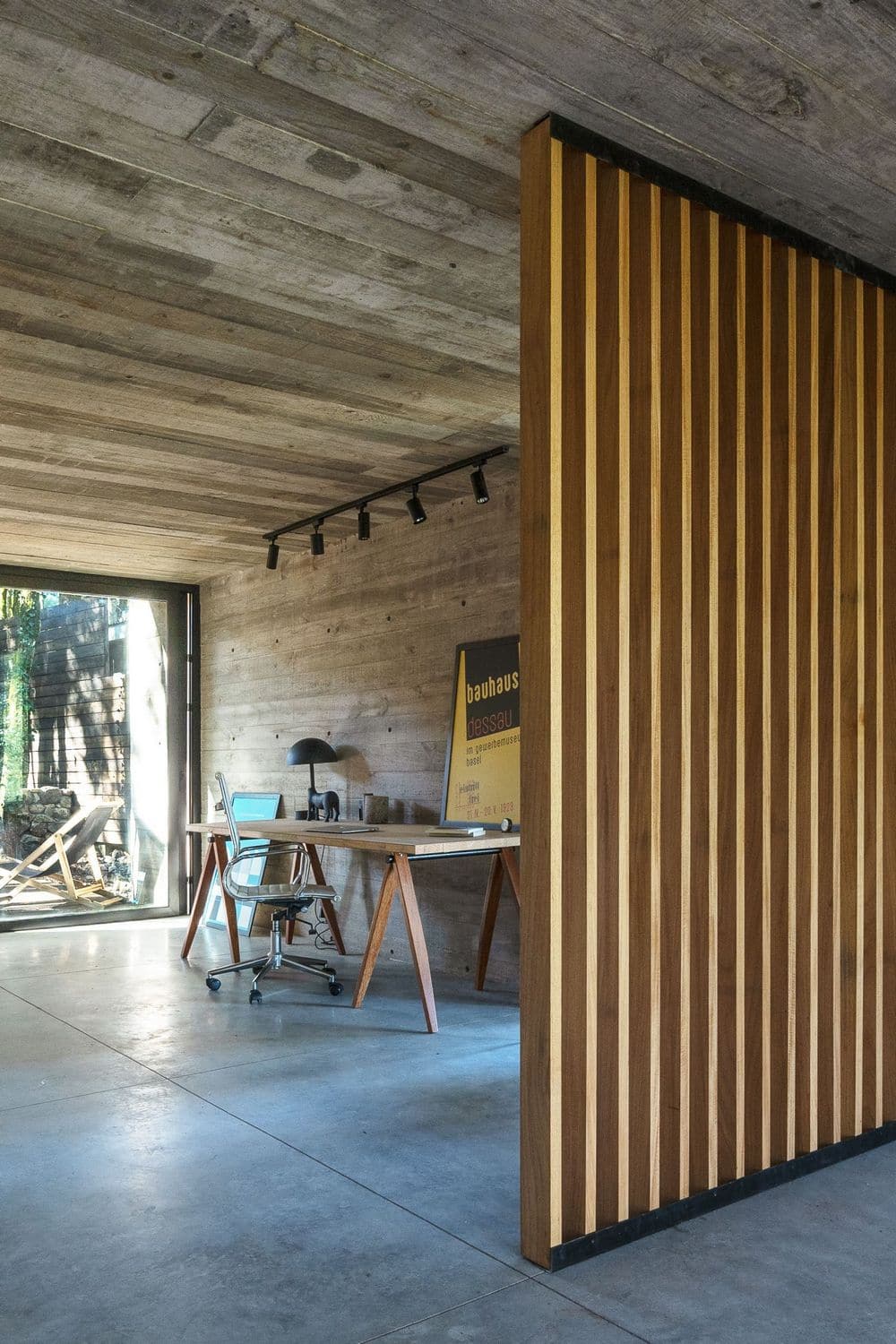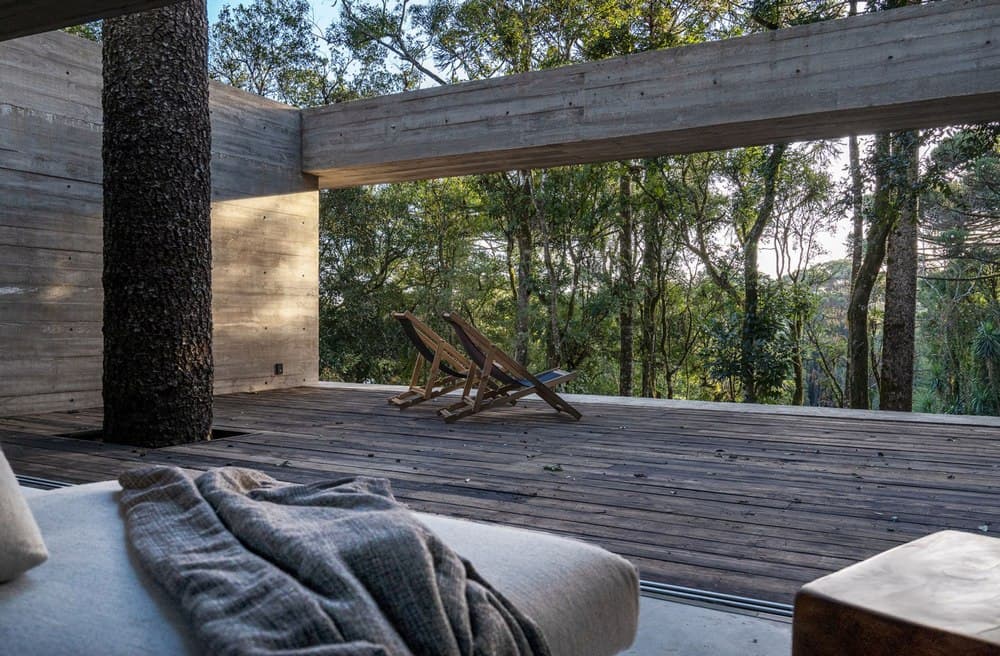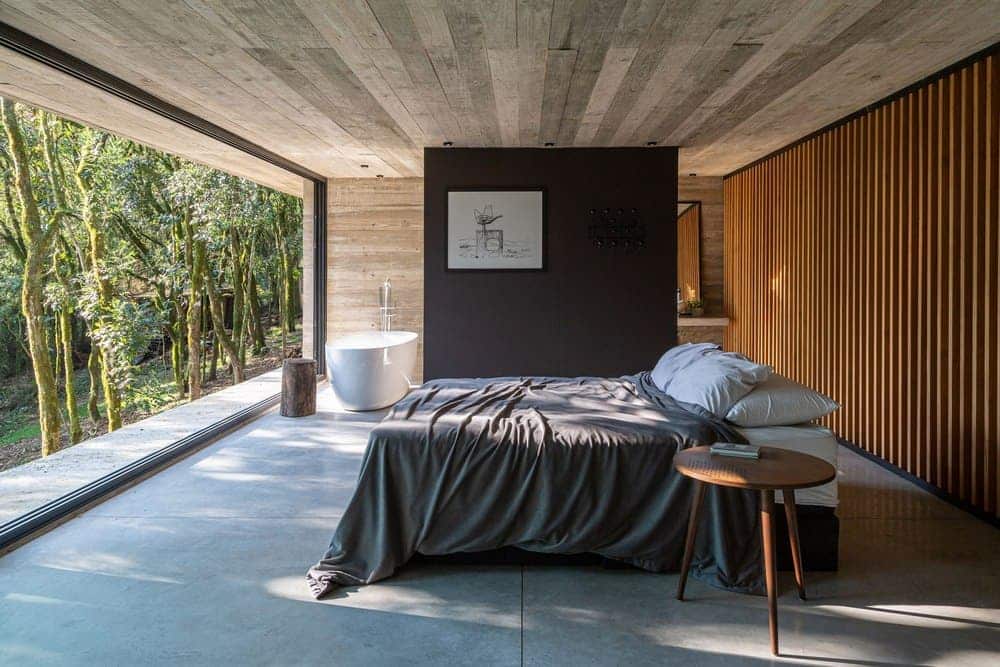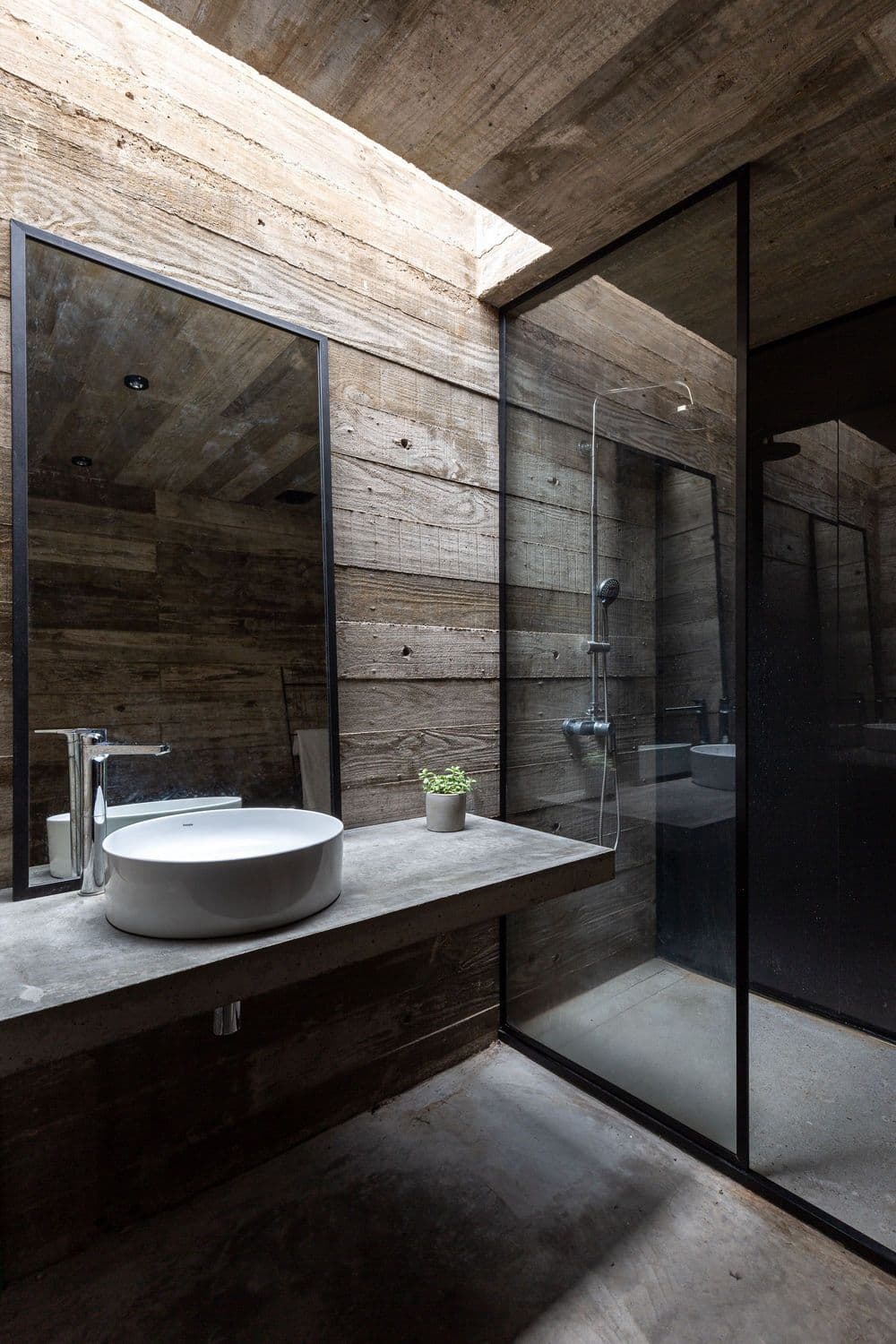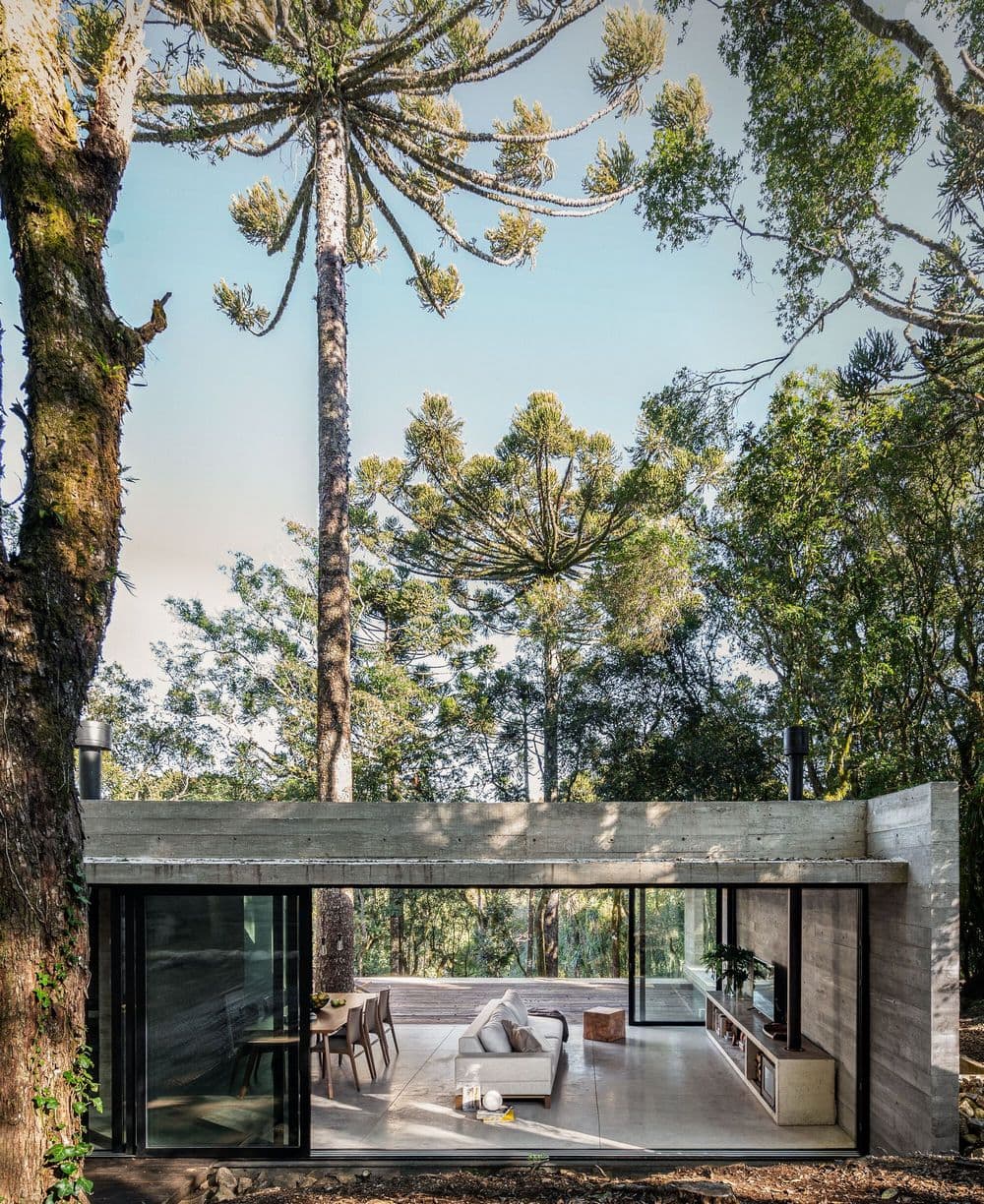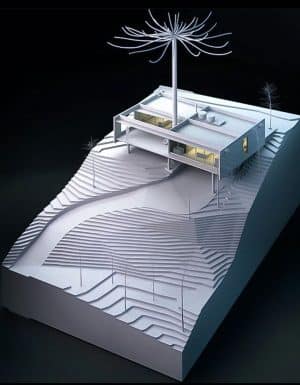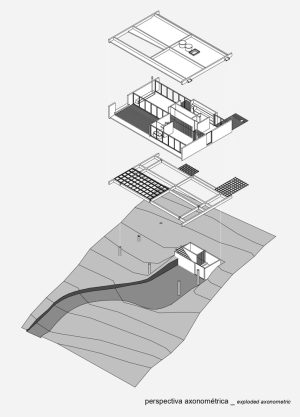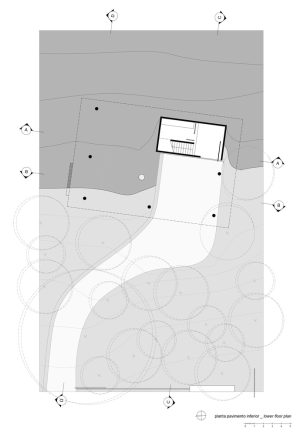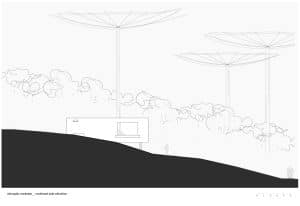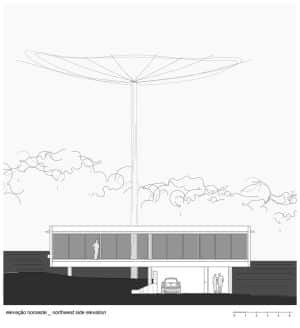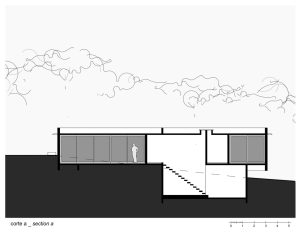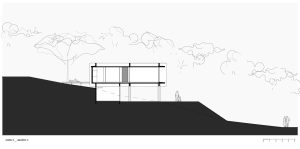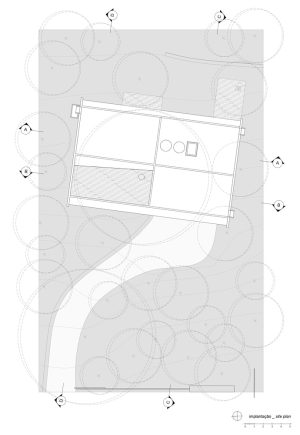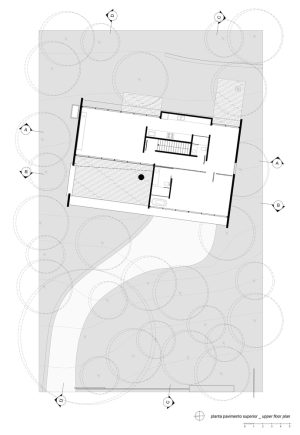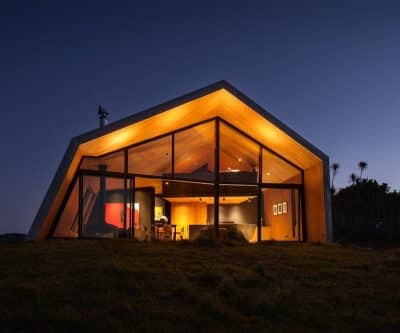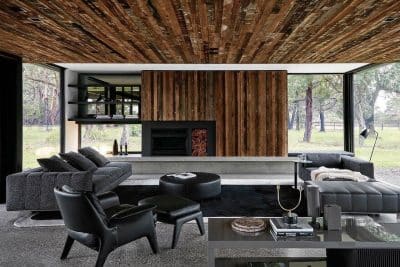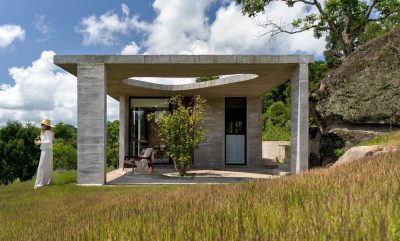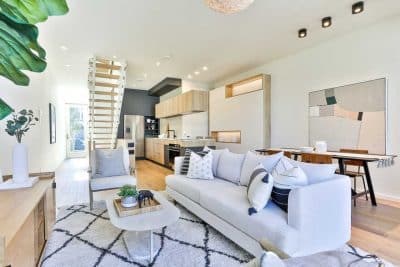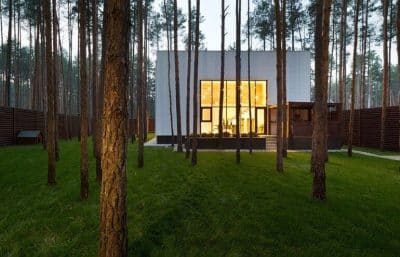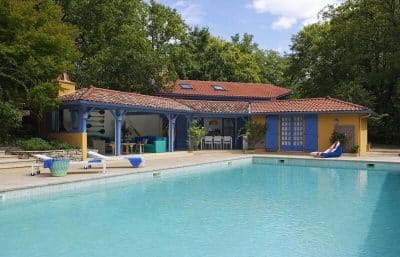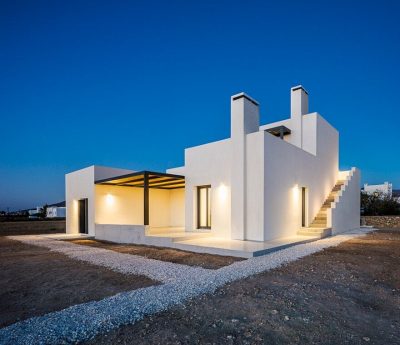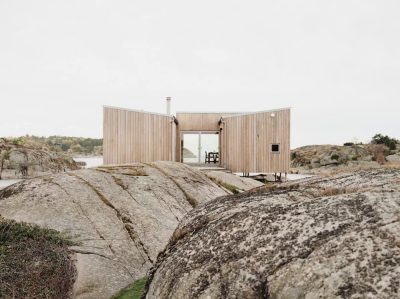Project: Fortunata House
Architects: Luciano Lerner Basso
Systems: Roberto Basso
Structures: André Granzotto
Location: Caxias do Sul, Brasil
Constructed Area: 240 m²
Land area: 1,000 m²
Year: 2020
Photo Credits: Manuel Sá, Roberta Gewehr, Andre Mortati
FORTUNATA, adj. from Italian: one who has been touched by luck. A house built around a tree, where reason is the main instrument in the search for the spirit of life.
Located in the extreme south of Brazil, the Fortunata house is a project that highlights the essential activities of Architecture: the attentive reading of the environmental conditions; the precise determination of the construction processes; the correct resolution of the program of needs; and the harmony of the built forms.
Built-in a traditional neighborhood, the house was built around a huge Araucaria Angustifolia. Access from the street to the entrance of the house is via a winding path of earth and gravel, the street enters the courtyard and extends to the front door. There are no walls, only a metal mesh. There is the intention that the ground of the house should be the same as that of the city; the desire to create urban spaces without barriers, to visually integrate the public and the private.
Its insertion into the landscape is a direct response to the limitations of the site. In order to minimize intervention in the topography, the main volume rests on a piloti that delicately touches the ground and adapts to the natural conformation of the terrain. All the material resulting from the excavation of the foundations was used; the earth was used as an embankment for the vehicle maneuvering area; the stones were used in the construction of the retaining walls. The native vegetation was almost entirely preserved. If it were possible for a huge crane to lift the house and place it elsewhere, the original site would be left virtually untouched, with no trace of the construction work.
Designed for a young couple, the programmatic division of Fortunata house is simple: on the lower level, under the pilotis, is a garage; entering the house are the entrance hall and laundry room. On the upper level, based on the geometric union of four rectangles, a structurally open floor plan was designed, where the separation between the functions of living, working and sleeping is given by the spatial condition generated by the spatial condition of the house.
The spatial condition generated by the server core and the use of light elements. There are no dead-end corridors or enclosed living spaces, and circulation occurs in a continuous movement through the flexible and multifunctional environments. A condition that allows the Fortunata house to assume different configurations and to adapt to changes in the lives of the owners.
Completing the program, three verandas built from the timber used in the concrete formwork connect the Fortunata house with the backyard; they extend the living room into the landscape. With no curtains or visual barriers between inside and outside, the inhabitant has permanent contact with nature. At the same time as he inhabits the house, he also inhabits the forest.
The exposed concrete molded-in loco is in the structure, in the enclosures, in the steps of the stairs, and even in the fixed furniture. It is a material that ages as beautifully as nature, is weather-resistant, and requires little maintenance, even in the humidity of the forest. In addition, it is a very common system in the region, with a lot of skilled labor and with lower construction costs than other systems with the same virtues. A structure that is raw and reveals a construction process that, while rigorous and precise, also shows the perfect imperfections of a work done by hand. A work where matter and technique are indivisible.
We designed a silent architecture that maintains a frank dialogue with nature, whether through its opaque walls, which in the harsh southern winter are confused with the fog or through the way the forest is reflected in its windows on days with blue skies. Its plastic quality lies in the relationships between planes, voids, lights, landscape, and textures. A project that expands the field of architecture itself and provides reflections on the relationship between the house and the city, between man and nature.
As for the sustainable aspects, in addition to the minimal intervention in the existing vegetation and topography, we highlight the use of reforested wood in the concrete formwork; reuse of this wood for the construction of the verandas; cross ventilation in all the rooms of continuous use; high-performance carpentry with thermal bridge breakage; hermetic double glazing; thermal insulation with EPS in the floor and ceiling slabs; treatment of the exposed concrete with solvent-free products; heating system powered by ecological fuel; use of rainwater for irrigation; natural lighting in all rooms, including the use of skylights; artificial lighting made entirely with low-energy bulbs, including automation to control outdoor lighting.




